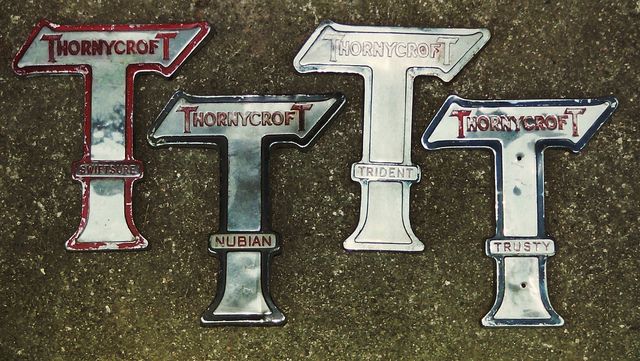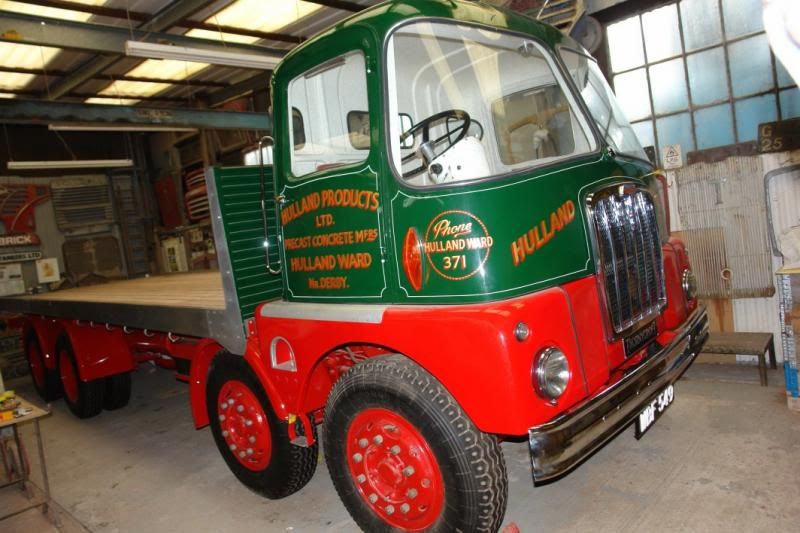Best Ergomatic Cabbed-Lorry Model? PART 18.Page 22.TRUCKNETUK
ERGOMATIC CAB PARK ROYAL.
PARK ROYAL ERGOMATIC CAB.
In my PART 4 of this thread I mentioned the Park Royal Vehicles Experimental Fibreglass Ergomatic Cab,but I didn’t have any photographs of it - but now I have 
PARK ROYAL EXPERIMENTAL FIBREGLASS ERGOMATIC CAB.
B53345 was the serial number of the one-off Park Royal Experimental Fibreglass Ergomatic Cab of 1964-1965.It differed from the usual steel production version in that it had a two-piece windscreen,which was more panoramic,it didn’t have front quarter lights on the forward part of the doors and the doors had narrower top sections.This cab could have been a prototype for UTIC of Portugal,since UTIC built fibreglass versions of the Ergomatic cab.
PHOTOGRAPHS:-
AEC-ALBION-LEYLAND.PARK ROYAL EXPERIMENTAL FIBREGLASS ERGOMATIC CAB.Semi-leftside on view:-
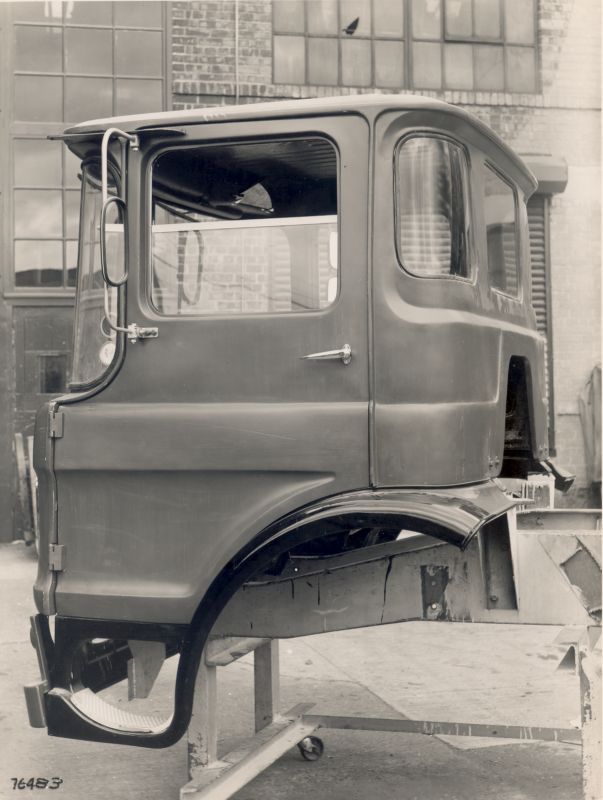
AEC-ALBION-LEYLAND.PARK ROYAL EXPERIMENTAL FIBREGLASS ERGOMATIC CAB.Rear nearside view:-
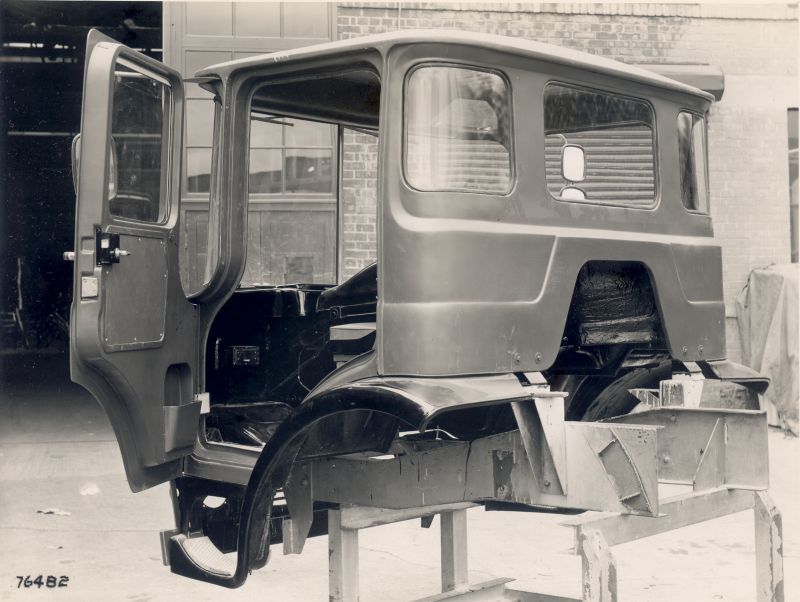
AEC-ALBION-LEYLAND.PARK ROYAL EXPERIMENTAL FIBREGLASS ERGOMATIC CAB.Front offside view:-
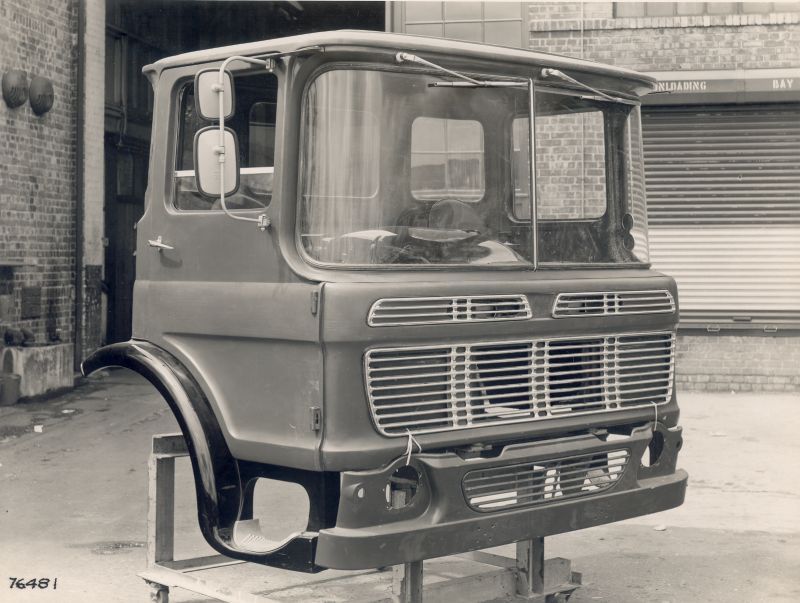
What is this Australian fire engine hiding behind this motor vehicle enthusiast?  :-
:-
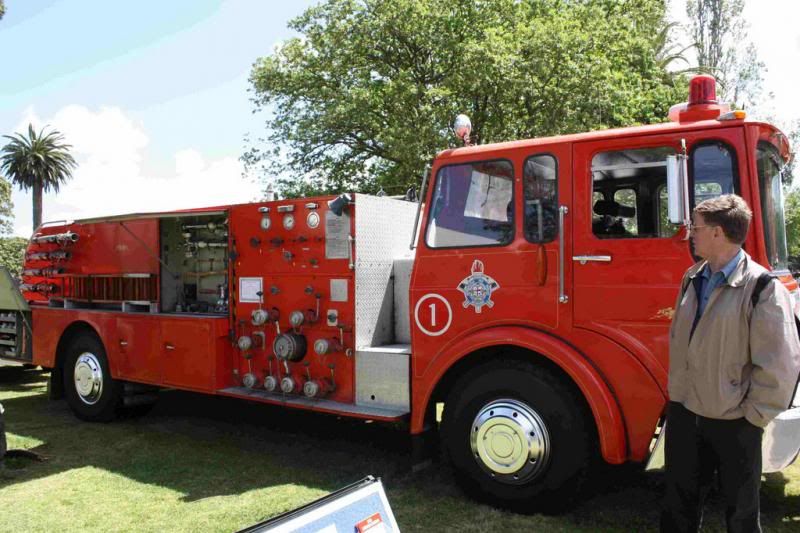
AN ATKINSON ERGOMATIC-CABBED?  !
! 
 FIRE ENGINE.
FIRE ENGINE.
Yes!  I wonder if AtkiPete and Chris Gardner know about this Ergomatic-cabbed Atkinson fire engine
I wonder if AtkiPete and Chris Gardner know about this Ergomatic-cabbed Atkinson fire engine
…it’s a real turn up for the books! 
 And it makes you wonder why the builders selected the
And it makes you wonder why the builders selected the
Ergomatic cab.
Atkinson/Wormald,AEC-Albion-Leyland-GKN Sankey Ergomatic Crew-cabbed,Limousine Pump Escape Fire Engine.
Specifications:-
AEC-Albion-Leyland-GKN Sankey Ergomatic Crew Cab.
Detroit 8V71 Two Stroke Diesel Engine.
Fuller Roadranger RT910 10-Speed Transmission.
Kirkstall Front Steering and Rear Driving Axles.
Hale 2000 GPM Water Pump.
Only two of these Atkinson Ergomatic-cabbed fire engines were built,and Wormald Fire Equipment of Australia and New Zealand developed these motor vehicles:-
Atkinson/Wormald,AEC-Albion-Leyland-GKN Sankey Ergomatic Crew-cabbed,Limousine Pump Escape Fire Engine.On the road FNSV:-
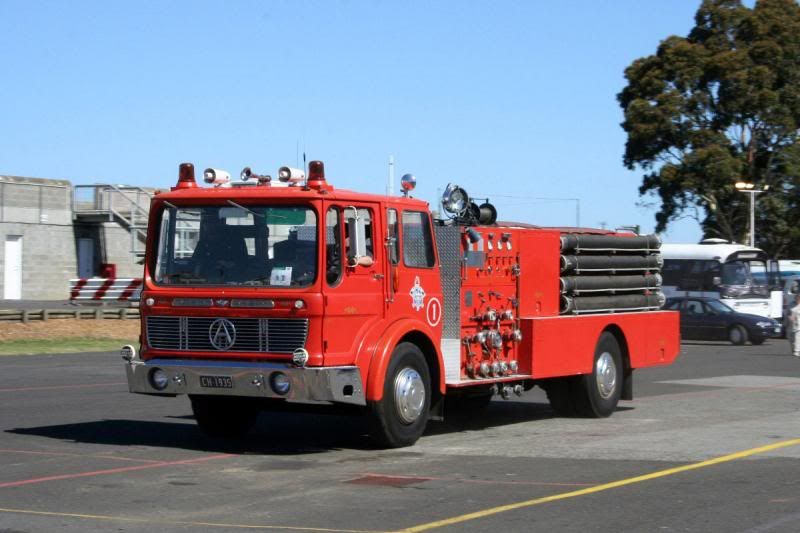
Atkinson/Wormald,AEC-Albion-Leyland-GKN Sankey Ergomatic Crew-cabbed,Limousine Pump Escape Fire Engine.Close up FNSV:-

AEC ERGOMATIC FIRE ENGINES.
It’s strange  that while Ergomatic-day and sleeper cabbed AEC,Albion and Leyland lorries have
that while Ergomatic-day and sleeper cabbed AEC,Albion and Leyland lorries have
been documented and illustrated on this thread,I cannot recall any Ergomatic crew-cabbed
motor vehicles ever beng mentioned and/or appearing on this TRUCKNETUK Best Ergomatic Cabbed-Lorry Model?  Thread
Thread  - until now
- until now  …
…
NOTE:The Ergomatic cab variations on these fire engines:-
AEC Mercury 505 TGM4R Ergomatic/HCB-Angus Limousine Pump Escape Fire Engine,YTO 999K,City of Nottingham,Central Fire Brigade:-
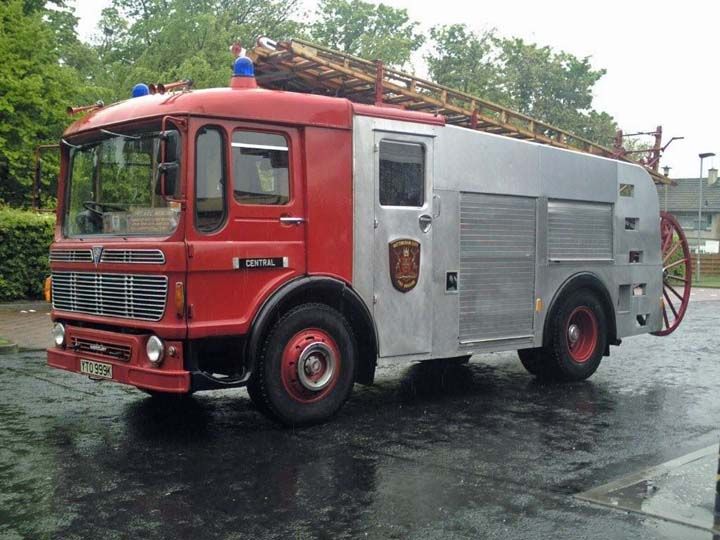
AEC Mercury 505 TGM4R Ergomatic/Merryweather Limousine 100 Ft Turntable Ladder Fire Escape Fire Engine,GDY 99F,GOODY,1968.East Sussex Fire Brigade.Preserved:-
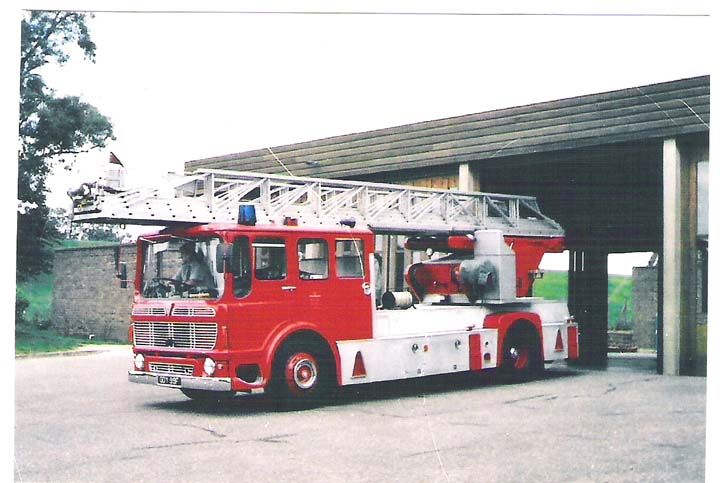
AEC Mercury 505 TGM4R Ergomatic-Merryweather Limousine Pump Escape Fire Engine,FWE 984J,City of Sheffied.Preserved:-
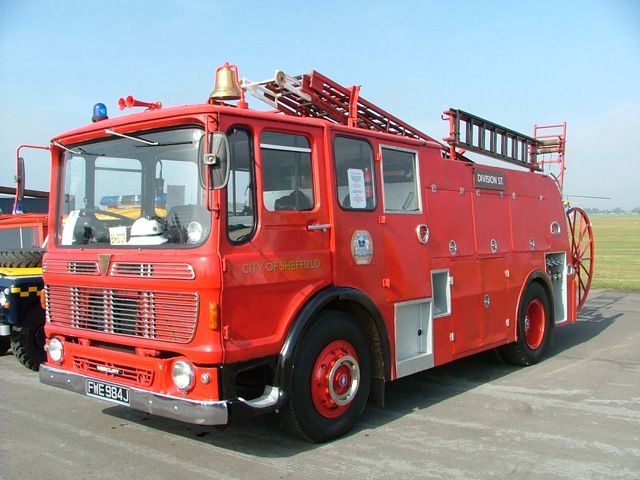
Some motor vehicle enthusiasts TRUCKNETUK members might be suprised in regard to the choice of
ex-British Leyland marque that I’ve made for the last say in my POST 18,considering that I’ve
blitzed the marque’s mis-management several times in this thread  .Yes.The marque is Leyland,but
.Yes.The marque is Leyland,but
the Leyland marque name and it’s motor vehicles,which I greatly admire,are seperate from the
terriable Leyland mis-management  ,who so mis-directed British Leyland that they did severe
,who so mis-directed British Leyland that they did severe
damage not only to AEC,Albion,Guy,Thornycroft,Scammell and other members of the group  ,but also
,but also
damaged the Leyland name and company to such an extent that,in the long run,Leyland itself became extinct  -twice over!
-twice over!  !
!  !:
!: 
 The Leyland marque was dropped from motorcoaches and buses in 1994 by Volvo
The Leyland marque was dropped from motorcoaches and buses in 1994 by Volvo  ,and then from lorries by DAF in 2000!
,and then from lorries by DAF in 2000!  !
!  !
! 

The Leyland marque 





 :-
:-
LEYLAND MARQUE NAME TRADITIONAL SCRIPT BADGE:-

LEYLAND DIESEL ENGINE SHIELD BADGE:-
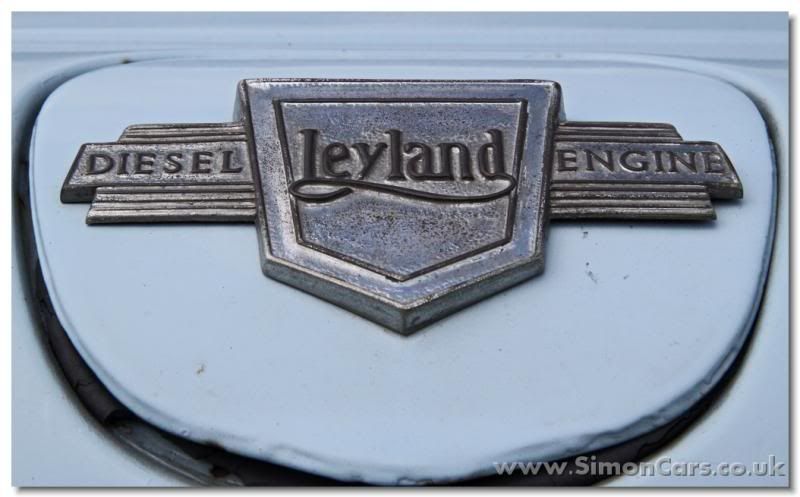
LEYLAND ROYAL TIGER DOYEN MOTORCOACH BADGE:-
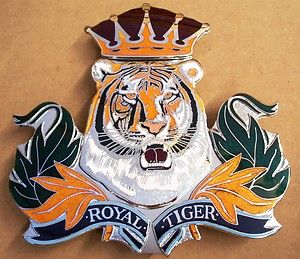
LEYLAND OCTOPUS 24.O4 MARQUE AND MODEL BADGES AND RADIATOR GRILLE.648 DXL,READER BROTHERS LTD:-

LEYLAND FREIGHTLINE OCTOPUS 240T/260T,REEFER BOXVAN,8x2 OR 8x4 LORRY,ECA 695C,1965.Made when the Leyland Motor Corporation was highly successful and was King! 
 :-
:-

For me,the wonderful,charismatic and beautiful archetypal image of the great Leyland marque
has always been an exposed radiator Leyland motorcoach,bus or lorry,especially an half cab
motorcoach or bus  :They were a universal everyday sight at one time in many parts of the United Kingdom right in to the mid-1970s or so
:They were a universal everyday sight at one time in many parts of the United Kingdom right in to the mid-1970s or so  - an ideal and classic example is this magnificent Leyland Tiger PS2 motorcoach,GDM 494 - THE BEAUTIFUL ARCHETYPAL LEYLAND MARQUE LOOK
- an ideal and classic example is this magnificent Leyland Tiger PS2 motorcoach,GDM 494 - THE BEAUTIFUL ARCHETYPAL LEYLAND MARQUE LOOK  :-
:-
LEYLAND TIGER PS2/3/HARRINGTON DORSAL FIN C33F MOTORCOACH,GDM 494,1950.Chassis No.500266,Body No.820.Wakley’s,Northop:-

And another photograph that captures the ubiquitous,attractive archetypal Leyland marque look and image  :-
:-
LEYLAND TITAN PD2/12/MCW H58R DOUBLE DECKER BUS,RWJ 713,1954,SHEFFIELD 713.West Street,Sheffield,April 1968:-
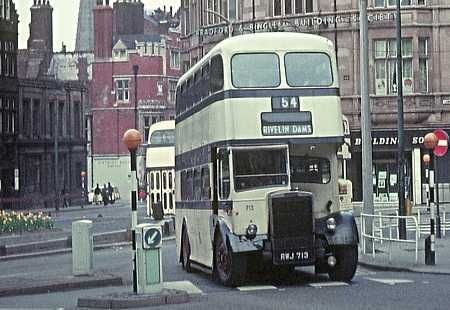
Returning to the same motorcoach,GDM 494,here it’s with it’s previous owner,doing motorcoach holday tours in Scotland  :-
:-
LEYLAND TIGER PS2/3/HARRINGTON DORSAL FIN MOTORCOACH,GDM 494,JANICE,IN SERVICE WITH CLASSIQUE MOTORCOACHES,DEAN,PAISLEY,SCOTLAND.With the wonderful and stylish hallmark dorsal fin on view! 
 :-
:-

And another view of the magnificent dorsal fin of Leyland Tiger motorcoach,GDM 494! 
 :-
:-

VALKYRIE


cheers benkku

